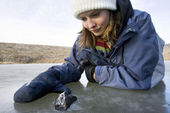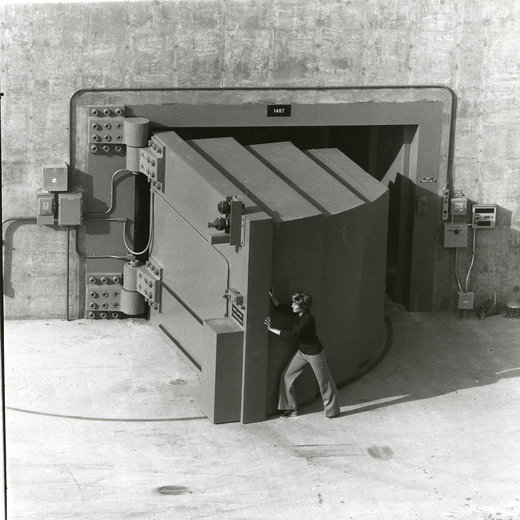
University of Calgary graduate student Ellen Milley, who was part of the team that found space rocks in an area known as Buzzard Coulee southeast of Lloydminster, was at the University of Saskatchewan in Saskatoon Monday to talk about what the team has learned.
So far, it looks like the meteorite didn't come from the asteroid belt beyond the orbit of Mars, she said.
The road to reaching that conclusion began when the space rocks fell Nov. 20.
It was a night when hundreds of people across Western Canada witnessed a spectacular fireball across the sky caused by the estimated 10-tonne rock.
Video surveillance cameras at motels and gas stations captured the flashes of brilliant light and the shadows they cast. A week later, Milley was part of the team led by U of C geologist and geophysicist Alan Hildebrand at Buzzard Coulee. It was she who spotted the first meteorite fragment in a frozen pond.
Later, she studied the flashes and shadows from the various surveillance and amateur videos.
She used the information to plot the fireball's path as it fell to Earth and then tried to figure out its orbit.
Milley's tentative conclusion, which she discussed in Saskatoon Monday, was that it didn't look like the space rock came from beyond the orbit of Mars.
"It looks like it's a very kind of tight inner solar system orbit," she said. "It's not something that's extended into the asteroid belt."
If she's correct, it would be the first time researchers have found debris from a meteorite so close to Earth, Milley said.
In terms of the composition, Milley and her colleagues have determined it's a relatively common type of meteorite with a high iron content.
However, there is still much more to learn about it, they say.
More than 100 fragments have already been recovered, but this spring, researchers will be resuming their search for more.
They'll be scouring the fields around Buzzard Coulee in search of an estimated two tonnes of rock that are believed to be studding the ground.



Reader Comments
to our Newsletter